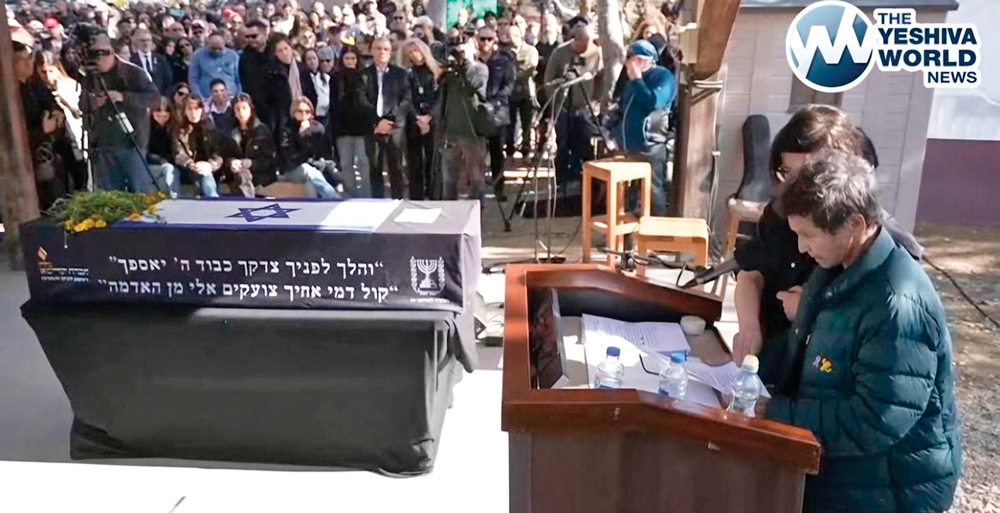

Based upon his 20 years as the rabbi of Congregation Sons of Israel in Cherry Hill and, additionally, his prior experience as founder and educator at the Center Program located at Ohr Somayach International in Yerushalayim, Rabbi Ephraim Epstein has realized that providing proper understanding and appreciation of the words of our tefillot for congregants and students is a “mission impossible.” As a child, Epstein loved to sit alongside his father and brothers at their shul in Fair Lawn and sing the familiar niggunim. As he grew older, he realized that the closeness he had felt to the davening experience as a young child waned as the words became rote and the meaning of the words unclear.
Fifteen years ago, Rabbi Epstein was determined to take up the challenge of injecting more meaning into our daily, Shabbat and holiday davening. He began by writing a weekly essay on tefillah. These articles were soon picked up by the OU and sent weekly to thousands of subscribers through their Tefila Tips publication. Ten years ago, on a trip to Eretz Yisrael, Rabbi Epstein met Rabbi Yaacov Haber, founder of Mosaica Press, based in Ramat Beit Shemesh, who encouraged him to collect his essays into a book, which he would publish.
The thought was to collect those essays dealing with one block of tefillot, and it was decided that the Shabbat tefillot would be the most meaningful entry point as they are the most familiar. The result of this collaboration is the recently released “Davening Divine: A Companion to the Shabbat Davening” published by Mosaica Press and distributed by Feldheim New York.
The slim volume, elegantly encased in an attractive white and gilt cover, can easily become a weekly companion. Rabbi Epstein proposes using the volume as a step-by-step guide. He suggests taking one block of the five Shabbat tefillot, studying its meaning and reciting it slowly and deliberately for two weeks, thus making it a familiar part of your repertoire. This method can be implemented by an individual as well as whole communities of shuls and schools. Only after a full exploration of one of the tefillot should one move to the next.
In Chapter 1, Rabbi Epstein introduces the uniqueness of the Kabbalat Shabbat service. For the fulfillment of no other mitzvah in the Torah do we have such an elaborate preparation as for the observance of Shabbat. The Kabbalat Shabbat service is a ritual of preparation for the acceptance of the Shabbat as if it were a real personality. First, we welcome the Shabbat as a guest as well as usher her out with a special meal. We wear special clothing for Shabbat. Whereas all the other mitzvot sanctify us, as we see when we recite “Asher kideshanu b’mitzvotav,” on Shabbat we enter a new world that resembles the world to come, “M’ein olam haba.” We eat fish and meat on Shabbat, representing the future Messianic celebrations including the leviathan and the shor ha’bor. We recite Tehillim 95 through 99 before we begin the actual tefillot as they refer to the days of Moshiach. These six chapters of prayer followed by Mizmor L’Dovid, chapter 29, represent the six days of the week. The Lecha Dodi following them corresponds to the Shabbat day.
Tehillim 95 introduces the idea that there are two levels of praise of God.The first is universal praise offered by all of the nations of the world who will come to realize His sovereignty over them. The second level of praise will be offered exclusively by the Jewish people who have been singled out by Hashem, who is their protector and loving King throughout history. The Psalms that follow Psalm 95 are divided into these two different expressions of praise for God.
Finally we arrive at the Lecha Dodi, the poem composed by Rav Shlomo HaLevi Alkabetz to accompany those who the Talmud tells us actually went out into the fields to welcome the Shabbat. We, the Jewish people, are the partner of Shabbat, which has no partner in creation other than us. There are many hidden messages within the words of the Lecha Dodi such as the need to extend ourselves and reach out to Shabbat, “Likrat shabbat lechu v’neilchah ki hi mekor habracha,” as she offers us a real taste of the world to come.
“Davening Divine” has been formatted in a highly user-friendly format. The six chapters covering the five Shabbat tefillot—Kabbalat Shabbat, Maariv, Shacharit, Mussaf, Mincha—and Holiday Pieces, are introduced by a clearly presented essay that illustrates the vast Torah knowledge and the pedagogical expertise of its author. Additional short insights follow each prayer, which is printed clearly alongside its English translation. Following each segment is a boxed section entitled “A Divine Approach,” which brings the message of the tefillah into our current lives and experiences, providing the relevance that is so crucial to enhancing the meaning of our davening today.
“Davening Divine: A Companion to the Weekly Shabbat Davening” should have a place on your bookshelf alongside your Shabbat siddur. It is geared for the new davener as well as the veteran as it presents a myriad of insights into the words of davening and puts them into a meaningful and logical order.
To purchase a copy, go to your local Jewish bookstore or contact Feldheim Distributors New York. Rabbi Ephraim Epstein can be reached at [email protected]. The book can be ordered online at www.daveningdivine.com.
By Pearl Markovitz
�












